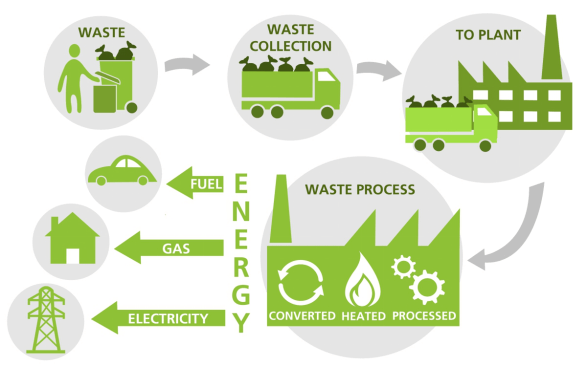Everyone knows that energy is important for our day-to-day activities. But what is most important is the source of that energy and whether it is sustainable enough. The world is currently looking for ways to bring about sustainable forms of energy that are not only cost-effective but would not have any detrimental effect on the environment. However, WTE changes all that. Here is a detailed guide to all it can achieve.
Waste-To-Energy (WTE), otherwise known as Energy Recovery or Energy-from-Waste, as the name implies, is simply to transform waste to energy in order to generate electricity, and the waste used is a usually solid organic waste. The energy that is generated from this process is renewable, that is why it is highly recommended to produce electricity to power heavy industries, homes, machinery, workplaces, and even transportation.
What Waste-To-Energy aims to do is to produce energy from waste, objects, and technologies that people do not care about or believe that it could produce something of that nature. Statistics have also shown that Waste-To-Energy is one of the primary contributors to the world’s energy supply. If treated effectively and with scientific methods, waste can be a powerful tool and resource.

So, how is this waste transformed into energy?
It is important that you know the composition of waste to enable you to understand how it can be converted to energy. As said earlier, the waste used in this process is usually a solid waste, but most solid wastes consist of both organic and inorganic materials, and it also has chemical energy. Now, the energy in this waste can be produced by the biotransformation technology or chemical heating process. The biotransformation technology consists of biofertilizer technology and biogas production technology, while the chemical heating process (or treatment) consists of various processes like pyrolysis, incineration, gasification, etc.
After the first treatment, this solid waste will now be transformed into the three states of matter- solids, liquids and gases, all containing energy. We say it is the first treatment because some of the matter may still contain materials that are dangerous to the environment or even the human body, so there is a second treatment if there is any need to remove these materials through efficient separation and purification processes

What are the facilities, technologies, and equipment used in the Waste-To-Energy Industry?
A lot of facilities and technologies are used in the WTE industry. They include:
- Waste gasification: This process basically involves reacting carbon components with gasification agents to generate gases like H2, CH4, CO, etc. If you compare it with solid waste incineration technology (which will be looked at in a bit), you would realize that this method recovers energy at a higher rate, does not pollute the environment as much and releases tiny amounts of flue gas. It is generally efficient. The facilities involved in this process include the gasifier and the gasification plant.
- Solid waste incineration: This technology is used to obtain energy from waste by safe incineration, and this waste is gotten from garbage that has stayed and developed over 20 years or more. The facilities involved in this process include the rotary incinerator, the fluidized bed incinerator, grate furnace, and steam turbine.


